Give the order of blood flow starting and ending with the body.
Body
superior and inferior vena cava
right atrium
tricuspid valve
r vertical
pulmonary valve
pulmonary trunk
lungs
pulmonary veins
L atrium
bicuspid valve
left ventricle
aortic valve
aorta
body
Valves act as what?
A one way door
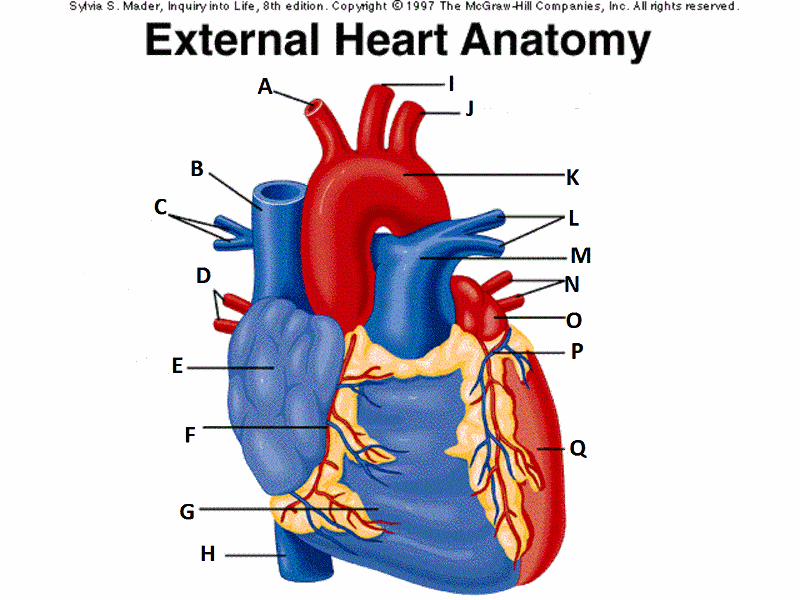
Identify A
Brachiocephalic trunk
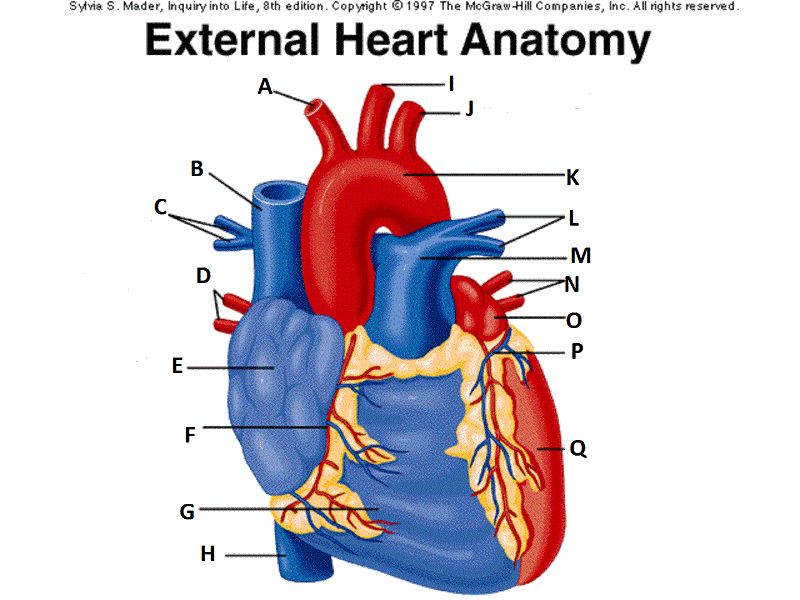
Identify B
Superior Vena Cava
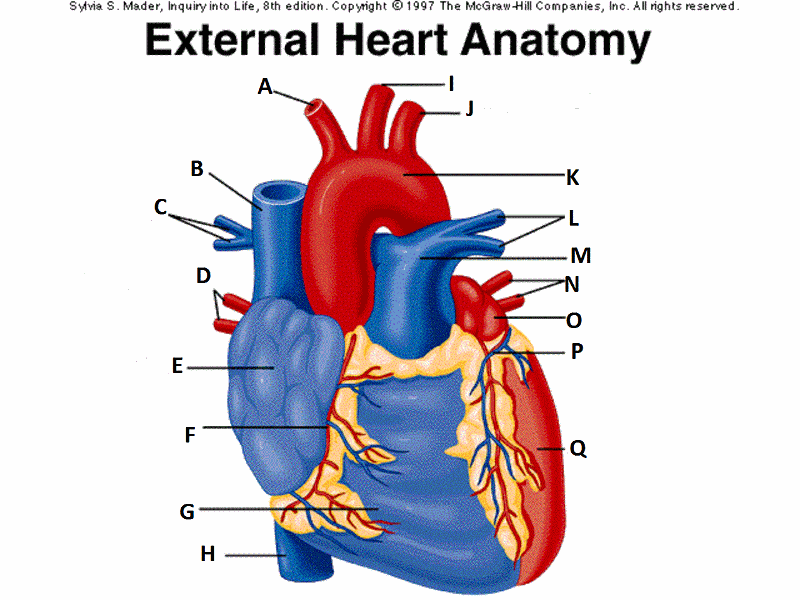
Identify C
Right pulmonary arteries
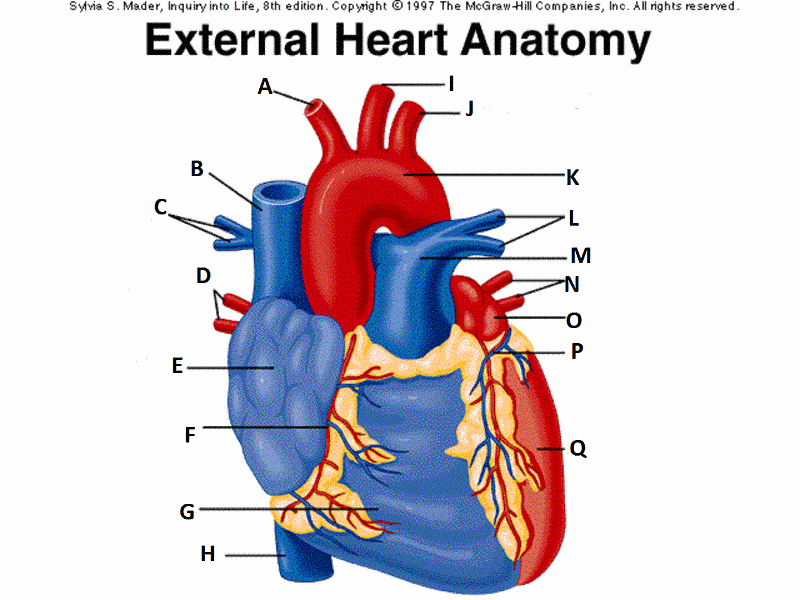
Identify E
Right Atrium
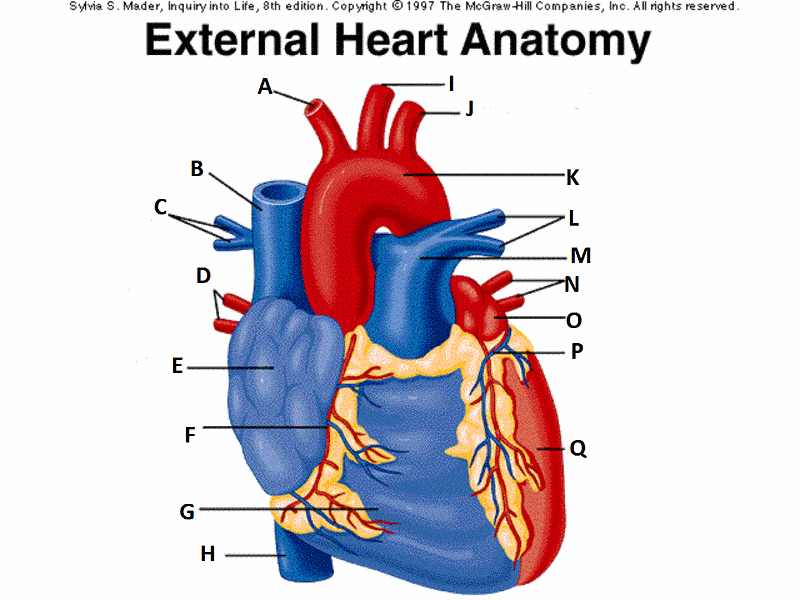
Identify F
Right Coronary Artery
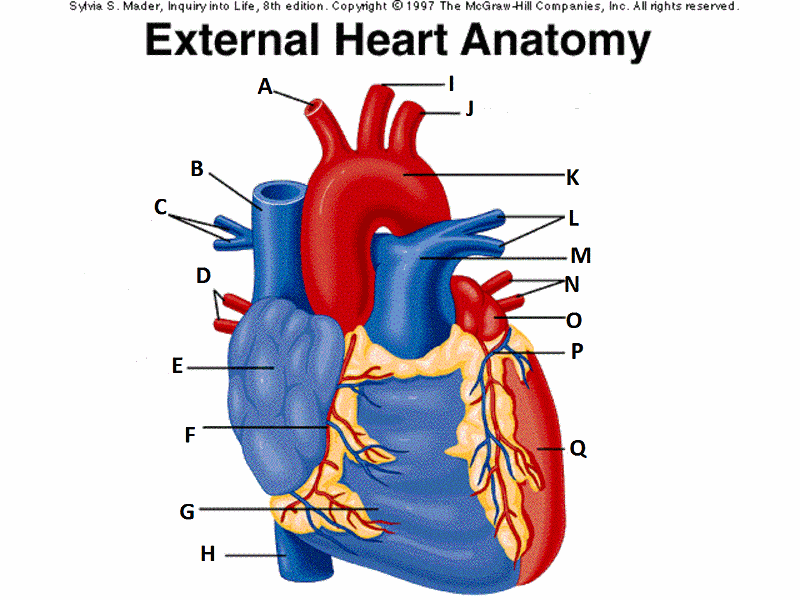
Identify G
Right Ventricle
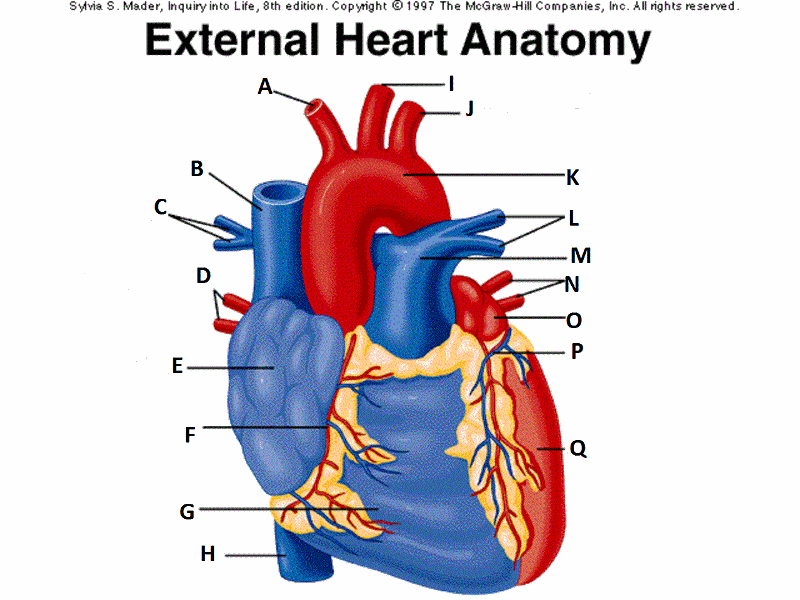
Identify H
Inferior vena cava
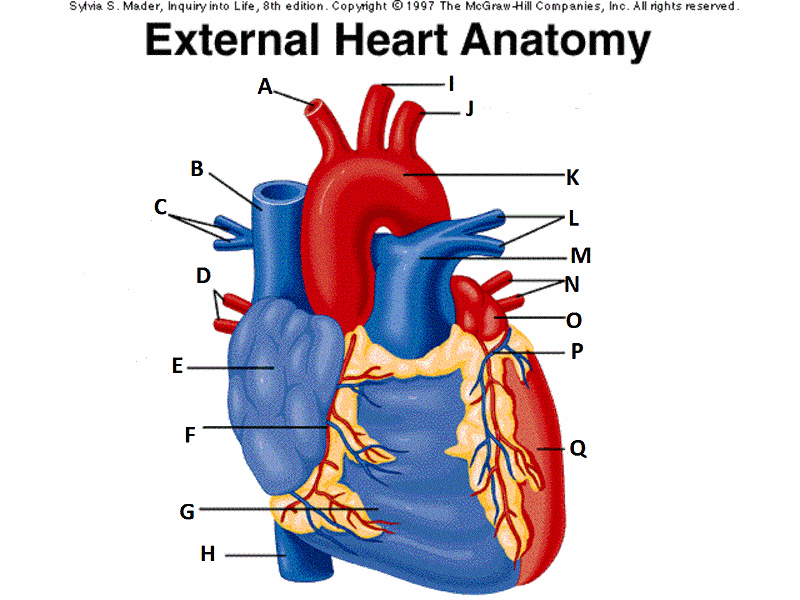
Identify I
Left common carotid artery
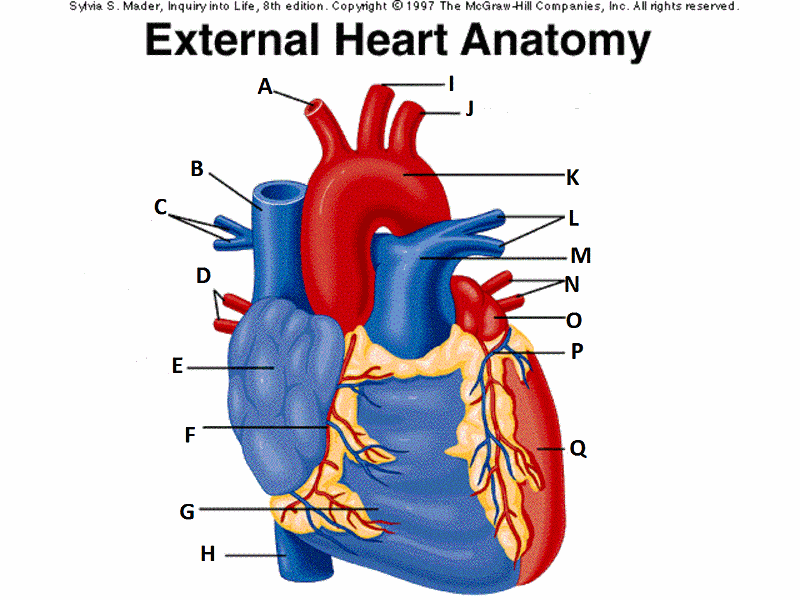
Identify J
Left subclavian artery
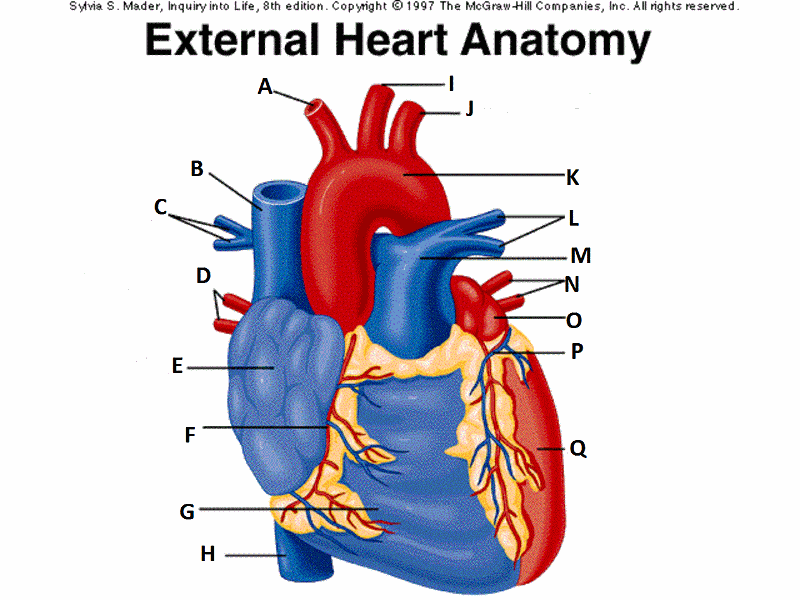
Identify K
aorta
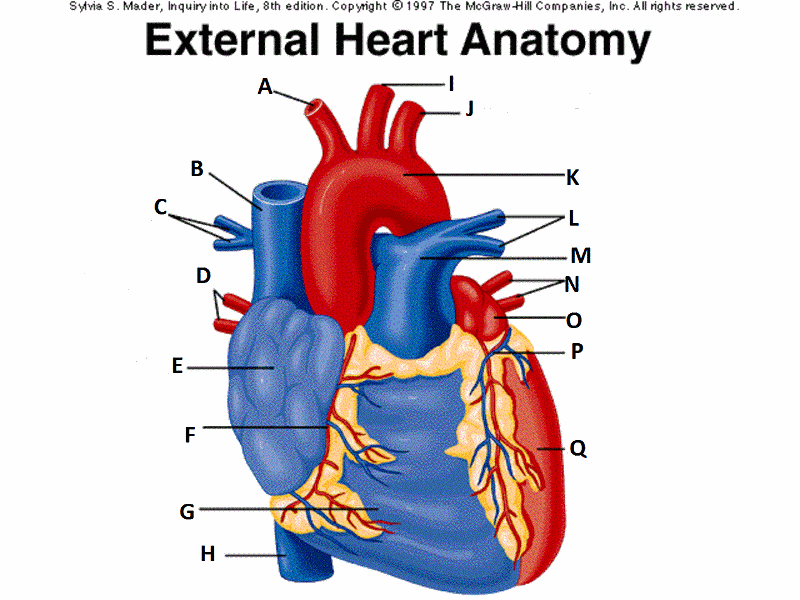
Identify L
Left pulmonary artery
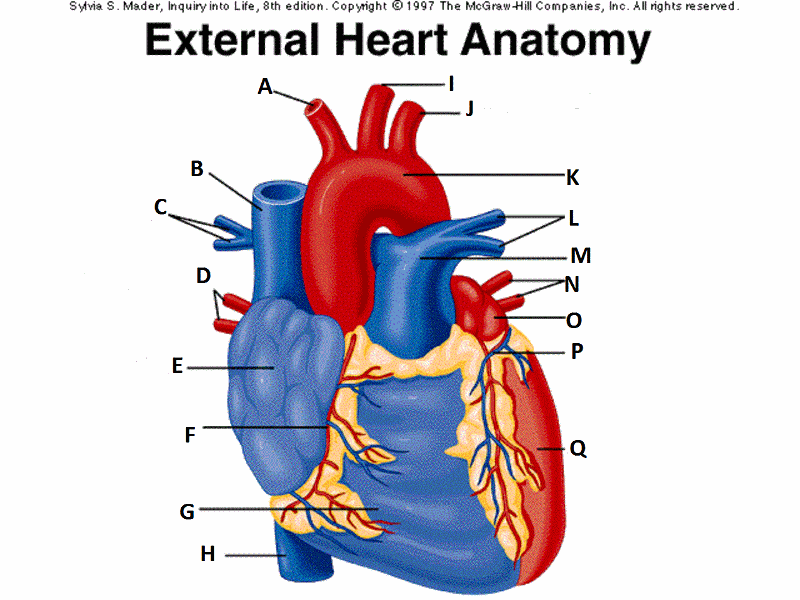
Identify M
Pulmonary trunk
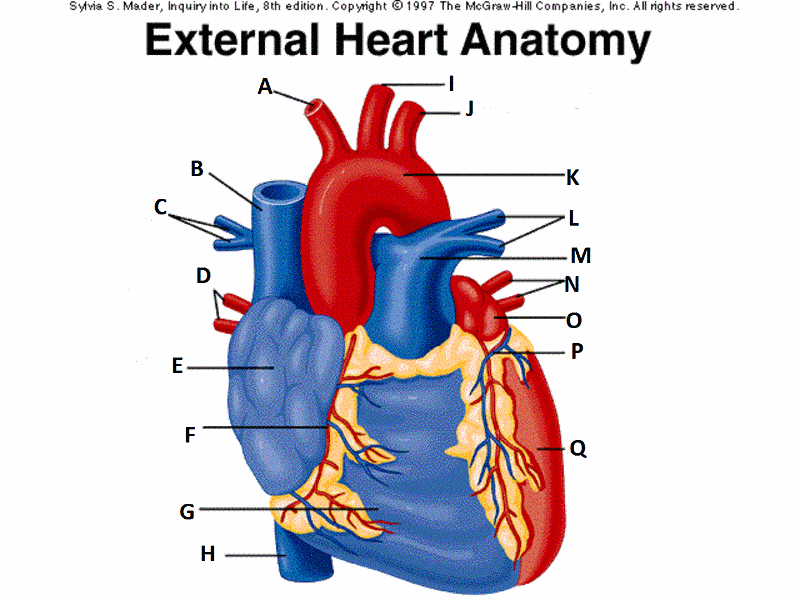
Identify N
Left pulmonary veins
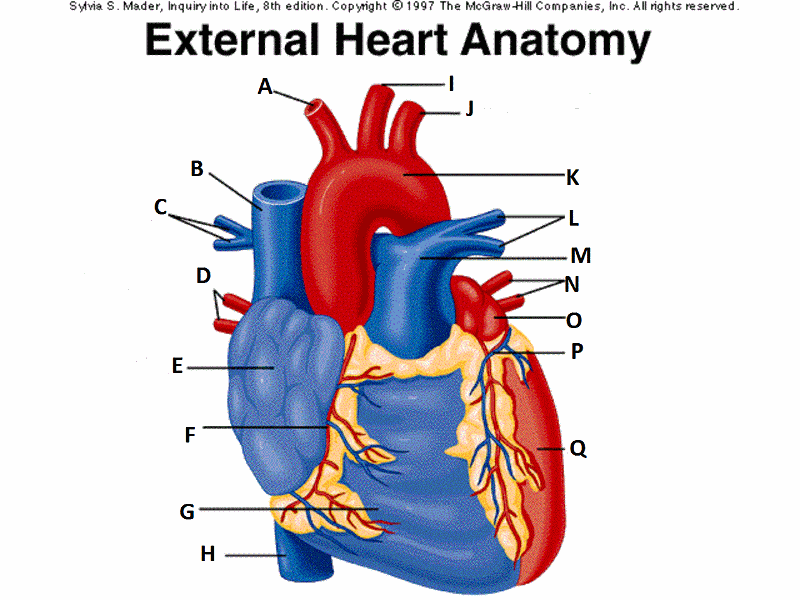
Identity O
Left atrium
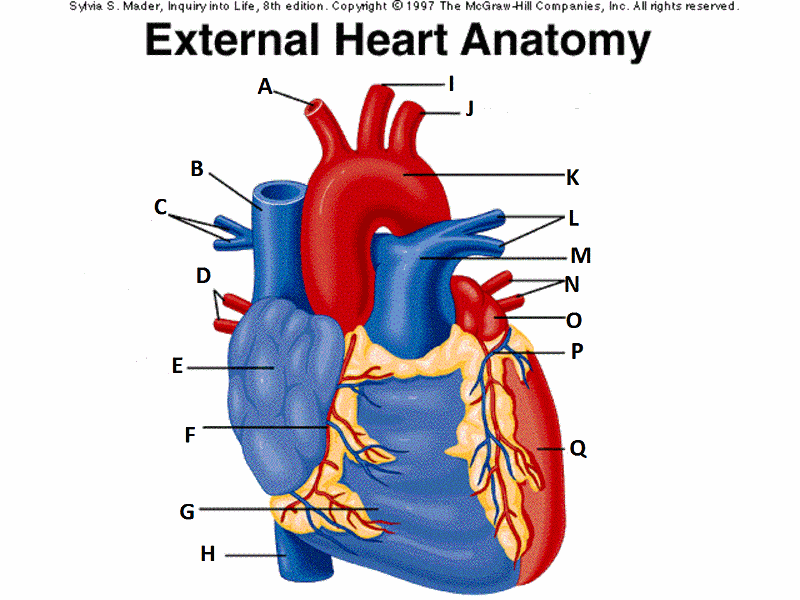
Identify P
Left cardiac vein
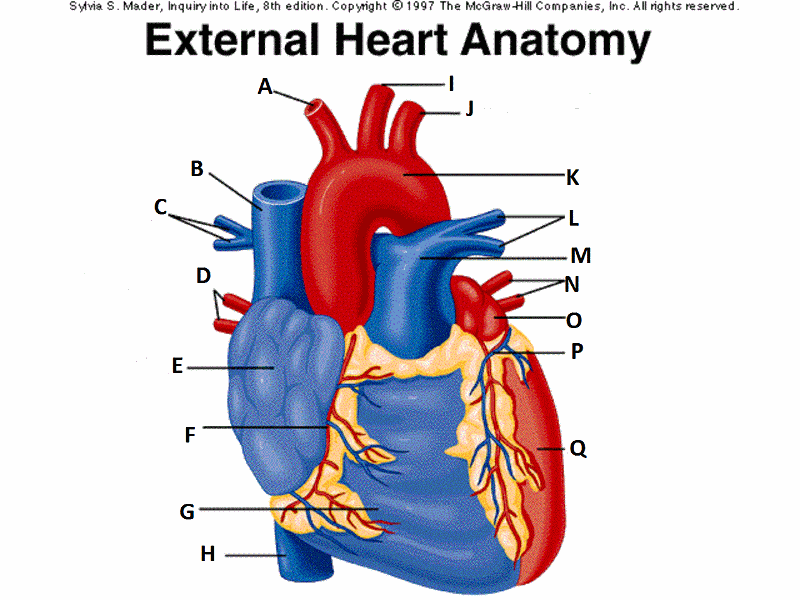
Identify Q
Left ventricle
The cardiovascular system consists of what?
heart, blood and all blood vessels
This is the body's pump which circulates blood throughout the body via the blood vessels.
The heart
This is the pointed inferior portion of the heart.
Apex
This is the superior portion of the heart where the blood vessels enter and leave.
Base
This is the connective tissue "sack" that contains and protects the heart. Its a serous membrane, secreting serous fluid to reduce friction and prevent sticking.
Pericardium
This layer of the pericardium covers the surface of the heart and is also known as the epicardium.
Visceral pericardium
This layer of the pericardium is the most outer.
Parietal Pericardium
This is an inflammation of the pericardium.
Pericarditis
This layer of the heart is the muscle layer and is composed of cardiocytes.
Myocardium
In the myocardium, the cardiocytes (heart cells) are connected by what?
intercalated discs
This layer of the heart is the most inner lining, of the chambers of the heart and continuous into the blood vessels. Its made of simple squamous epithelium.
Endocardium
This kind of circulation has blood flow from the heart to lungs and back for oxygenation.
Pulmonary circulation
This kind of circulation has blood flow from heart to body and back.
Systemic circulation
This kind of circulation has blood flow from the muscle tissues of the heart.
Coronary circulation
These are the lower chambers of the heart.
Ventricles
These are the upper chambers of the heart.
Atria
This is the wall that divides the atria.
Interatrial septum
This vein is both superior and inferior, brings deoxygenated blood from the body to the right atrium.
Superior and Inferior Vena cava
These veins bring oxygenated blood from the lungs to the left atrium.
Pulmonary veins
This takes oxygenated blood from the left ventricle to the body.
Aorta
This takes deoxygenated blood from the right ventricle to the lungs.
Pulmonary trunk
These are 'flaps' on the outside of the atria, they allow the atria to expand.
Auricles
This is the valve between the right atria and ventricle, ensures one-way flow of blood.
Tricuspid valve
This is the valve between the left atria and ventricle, ensures one-way flow of blood.
Bicuspid valve
This is the valve between the left ventricle and aorta, it ensures a one-way flow of blood.
Pulmonary semilunar valve
This is the muscle ridges lining the atria.
Pectinate muscles
In fetal development, this is what allows the blood to bypass the lungs. After birth, it closes leaving a depression.
Fossa (foramen) Ovalis
This literally means "heart strings". They anchor the valves to the ventricle wall to ensure that they don't invert during ventricular contractions.
Chordae tendinea
This is the muscle to which the chordae tendonae anchor.
Papillary muscle
This is the band of muscle that allows electrical signals to pass from the interventricular septum to the muscle of the right ventricle.
Moderator band
One complete heartbeat is known as what?
cardiac cycle
The contraction phase of a chamber is what?
Systolic
The relaxation phase of a chamber is what?
Diastole
The heart sound that a heart beat gives off is commonly reffered to as what?
Lub Dub
The "Lub" of the heart beat is when what happens?
closure of the AV valves
The "Dub" of the heart beat is when what happens?
Closure of the semilunar valves
Identify A
Coronary sinus
Identify B
Middle cardiac vein
Identify
Small cardiac vein
Identify D find on front too!
Great cardiac vein
Identify (front)
Anterior interventricular artery
Identify E
Circumflex artery
( front) Identify
Left coronary artery
Identify G
posterior interventricular artery
Identify
Marginal artery